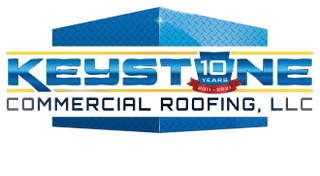Commercial property owners and property managers know that maintaining the integrity of a building’s roof is crucial. The cost of a roof replacement can be daunting. When it comes to roof restoration or repair, single-ply membrane roofing systems can help you get the best return on your investment and help save you thousands of dollars in roof repairs.
Single-Ply Membranes: The Basics
These roofing membranes are designed to be installed in a solitary layer of defense. Single-ply membranes offer high-performing protection for waterproofing, continued maintenance, energy efficiency, and for extending the life of your existing commercial roof.
Single-Ply roofing systems are made of flexible membranes of plastic-derived compounds that cover and protect flat roofs and low-slope roofs. They can be installed over various existing roof materials and add up to 30 years to a roof’s life. Single-ply roofing materials are either thermoset or thermoplastic. EPDM is a thermoset; PVC and TPO are thermoplastics.
Benefits of a Single-Ply Commercial Roof System
These roofing membranes are:
- Designed to be installed in a solitary layer of
defense - Installation is a lot faster than other methods
- Resistant to UV damage
- Waterproof; outstanding protection against rain,
snow, and hail. - Remain flexible
- Are Class A fire rating
- Extend the life of your commercial roof without
the expense of an entire roof replacement
Types of Single-Ply Roofing Systems
Single-ply roofing systems are typically:
- Thermoplastic Polyolefin (TPO): These single-ply
membranes are gaining in popularity worldwide because their synthetic compounds
resist tears and punctures, plus the single-ply membrane resists dirt buildup.
TPO can also lower the costs to cool your building with its UV-resistant
properties. - Polyvinyl Chloride (PVC): Polyvinyl chloride
(PVC) is the most used commercial membrane and it’s easily recognized as the
white “cool” roof seen on a local building and warehouse. These roofing systems
can offer cost savings on a building’s HVAC use. - Ethylene Propylene Diene Monomer (EPDM): This is
a rubber roofing system that offers protection again rain, snow, hail, UV
radiation, and extreme temperatures. Because it’s lightweight and flexible,
it’s a good choice for low-slope and flat roof applications.
Flexion: Single-Ply Formulation
We recommend Conklin’s Flexion single-ply membrane roofing system ideal for use on flat roofs, and occasionally on metal roofs. Flexion is a polyvinyl chloride thermoplastic combination that offers a good ROI in roofing restoration.
Keystone Commercial Roofing systems can outperform TPO and EPDM for Class A Fire Rating.
How Much Does a Single-Ply Roof Cost?
With its reduced maintenance requirements and “green roof” energy-saving qualities, single-ply membrane can save property owners money. Roof repair and replacement through Keystone Commercial Roofing can save you up to 50% per square foot compared to traditional roof replacement.
How is Single-Ply Membrane Installed?
Our single-ply membrane systems are attached using our exceptional 4-step
installation process, which starts with a thorough cleaning of your commercial roof’s surface and ends with a weatherproofing urethane sealant that ensures a hermetic seal around your new roof’s edges and joints.
A single-ply roofing system can offer decades of energy-efficient, watertight protection for your commercial building for less money than traditional roof replacements. Our professional roofers are ready to answer your commercial roofing questions. Give us a call at 814-219-9667.

Comments are closed